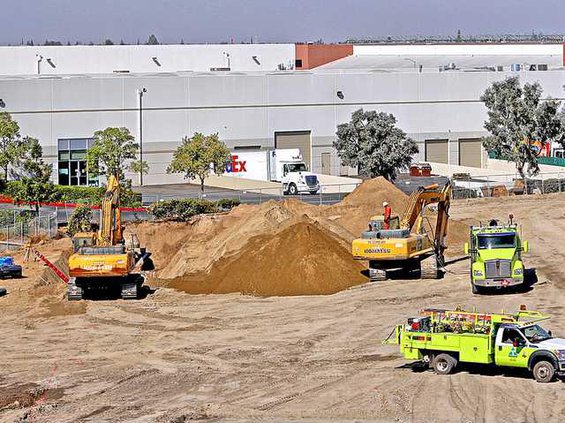Manteca is less of a bedroom community today than it was seven years ago.
Based on data gleaned from the American Community Survey conducted by the Census Bureau, Manteca in 2015 — the last year data was compiled — had 0.70 jobs for every employed resident. That’s up from 0.59 jobs per employed resident in 2010. It reflects a 14 percent increase in jobs within the city limits in relation to Manteca residents that are employed.
And while that doesn’t mean 70 percent of the 29,872 Manteca residents employed in 2015 worked in Manteca as people residing in other communities hold jobs based in the city, it does underscore that a large share of residents have no choice but to leave Manteca to earn a paycheck. And when compared to the early 1990s when Carlon Perry launched his first successful race for the City Council on the theme of “jobs, jobs, jobs” — a slogan that is now engrained in local political jargon — Manteca’s jobs to employed residents has almost doubled.
The data is included in the land use and socioeconomic information DeNova Group has cobbled together as it leads efforts to fashion an update of the city’s general plan designed as a blueprint for growth through the year 2040.
The trend of Manteca slowly chipping away at its bedroom community status will continue in the next 12 months. Manteca in the past eight years has been adding an average of 1,000 residents, with roughly 450 of those new residents being in the job market with the rest either being children or retired. Should that trend continue, by next October when Manteca has another 1,000 people or 78,000 residents, the community will have added more than 500 jobs based on firms now building, remodeling or expanding. The list will be led by 5.11 Tactical bringing at least 217 jobs and Amazon Prime with 100 plus jobs.
The unemployment rate went from 15.1 percent in 2010 down to 8.9 percent in 2015. The Manteca unemployment rate for September of this year stood at 6.7 percent, according to the California Economic Development Department.
The only area that Manteca has more jobs in than city residents working in that sector is agriculture. There are 504 local jobs and 721 Manteca residents working in agricultural related fields.
The largest number of Manteca residents — 5,721 — are working in education services, health care and social assistance. There are only 3,502 such jobs, however, in Manteca.
There are three categories where the available local job shortfall for Manteca residents employed in those fields exceeds 800 jobs.
There are:
u4,047 Manteca residents working in retail trades but there are only 2,591 retail jobs in Manteca for a shortfall of 1,456 jobs.
u2,101 Manteca residents working in arts, entertainment, recreation, accommodation (hotels) and food services but there are only 605 such jobs in Manteca for a shortfall of 1,496.
u2,475 Manteca residents working in construction but there are only 1,612 such jobs in Manteca for a shortfall of 863 jobs.
Two employment areas where the gap between workers and jobs has been narrowing are in wholesale trade (distribution centers) and manufacturing.
There are:
u3,473 Manteca residents working in manufacturing but only 2,940 manufacturing jobs are in Manteca for a shortfall of 533 jobs.
u1,149 Manteca residents working in wholesale trades but only 895 such jobs in Manteca, for a shortfall of 254 jobs.
The mismatch of Manteca residents working in specific fields and where the jobs they hold are located is illustrated by commuting statistics.
City residents hold 8,074 of 14,312 jobs
located in Manteca
The Census Bureau noted of the 14,213 jobs in Manteca in 2015, 8,074 of those jobs were staffed by people living within Manteca. the remaining 6,238 were staffed by people not living in Manteca.
Among the Manteca residents who are employed, 27.8 percent work within Manteca, 30.9 percent work within San Joaquin County but outside of Manteca, and 32.9 percent work in other counties led by the bay Area, then Sacramento, and then Stanislaus County.
The reason for commuting to jobs outside of Manteca is typically significantly higher pay.
Of Manteca’s 29,943 employed residents:
u78.5 percent drive alone to work.
u13.2 percent car pool.
u3.5 percent work at home.
u1.8 percent use public transit.
u1.5 percent walk.
uO.4 percent use a motorcycle.
u0.3 percent bicycle.
Data regarding current employment, jobs, and commuting are used to help shape growth strategies that will be recommended that the City Council adopt for the next 22 years when Manteca is expected to go from 77,000 residents today to 124,500 residents in 2040.
The next General Plan Advisory Committee is set for Monday, Nov. 6, at 6 p.m. at the Manteca Transit Center, 220 Moffat Blvd.
The topics on the agenda are discussions on conservation and open space as well as air quality.
To contact Dennis Wyatt, email dwyatt@mantecabulletin.com
Less bedroom, more jobs
Manteca increases local jobs compared to local workers by 14 %





